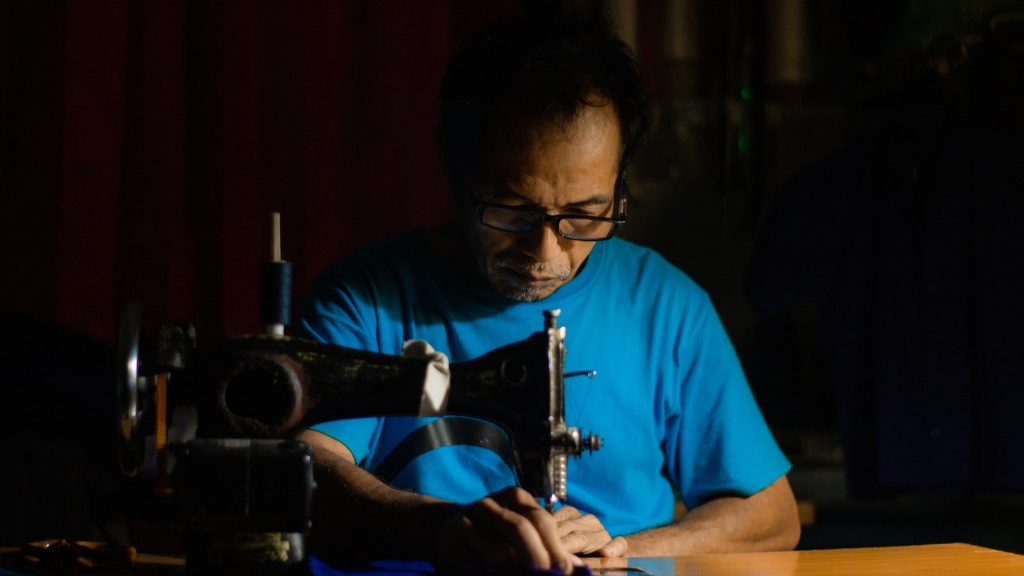Tension Adjustment
Adjusting the tension of a sewing machine is a simple but crucial step in successfully completing any sewing project. Proper tension allows you to create even, uniform stitches so that your fabrics look professional and neat. Tension adjustment can be done manually, but certain models of sewing machines come with an automatic tension feature that makes setting the tension easier. To manually adjust the tension on your machine, you will need a small screwdriver and the instruction manual.
Start by threading the machine with the thread you plan to use for your project, and use the appropriate needle size. Pull the thread off the spool and guide it through the upper tension disks, following the numbers or symbols that indicate the tension setting. Make sure the thread goes through both of the upper disks and into the bobbin case. From there, take the thread through the lower tension springs and back towards the spool. This is the standard, base tension for most machines.
If you are having trouble achieving the proper tension, you can turn the tension knob counterclockwise to make the tension looser or clockwise to make it tighter. When you are done, test the threading tension by pulling on the thread and making sure that the upper thread runs smoothly from the spool. You may have to make multiple adjustments before you find the correct tension.
Bobbin Adjustment
In addition to adjusting the thread tension of the machine, you may also need to adjust the bobbin tension. To do this, you will need to unscrew the bobbin case and tighten the screw located inside. The proper tension setting can be found in the manual and should be tested with the same thread that you plan to use for your project. Make sure the thread leaves a light, even loop around the bobbin case when finished.
Once you have adjusted the bobbin tension, check the upper thread tension again to make sure that the settings for both parts of the machine are working together. If necessary, make further adjustments until you are satisfied with the overall tension.
Testing the Tension
Before beginning a project, it’s important to test the tension of your machine to make sure that it’s calibrated properly. Start by sewing on a scrap piece of fabric and examining the stitched result. If the tension is too loose, the bottom thread will loop to the top of the fabric, but if the tension is too tight, the stitches will appear overly tight and have a rippled effect. Once you are happy with the tension, you can move onto the project at hand.
Cleaning and Maintenance
Regular cleaning and maintenance of your sewing machine is essential in keeping it in good working order. Make sure to routinely clean out the lint, oil the moving parts, and check for any loose screws or other problems that may cause tension issues. If your sewing machine is producing uneven stitches or you are experiencing tension issues, make sure to check it for any malfunctions that could be causing the problem.
Using the Right Needles
Choosing the correct needle for the fabric being sewn is also an important factor when it comes to tension adjustment. Different fabrics require different types of needles, and using the wrong needle can cause tension problems and result in skipped stitches or pulled threads. Consult the instruction manual for the types of needles your machine is compatible with and use the appropriate one for each project.
Understanding the Different Fabrics
Every fabric is different and will require different tension settings and types of needles, so it’s important to take the time to understand the properties of the fabrics you are using. Take note of the weight, thickness, and elasticity of each fabric and adjust the machine accordingly. Some fabrics, such as stretch fabrics and other delicate materials, require special needles to avoid damaging the fabric.
Adjusting the Pressure
The pressure of the presser foot should also be adjusted according to the type of fabric you are sewing. Presser foot pressure can range from light to heavy and should be adjusted to the type of fabric being used. Using too much pressure on light fabrics or not enough pressure on heavier fabrics can create tension problems and lead to uneven stitches.
Testing for Accuracy
After making the necessary adjustments to the tension, needle, and pressure, take a few more test stitches on a scrap piece of fabric to make sure that everything is accurate. Adjust any of the settings as necessary until you are happy with the results. It’s a good idea to regularly check the tension of your machine before beginning a new project to make sure it is calibrated correctly.
Selecting the Right Thread
Finally, make sure to choose the right type of thread for your machine. Not all threads are compatible with all sewing machines. Consult the instruction manual to find out which threads are recommended for your machine and avoid using any that may cause tension issues.



